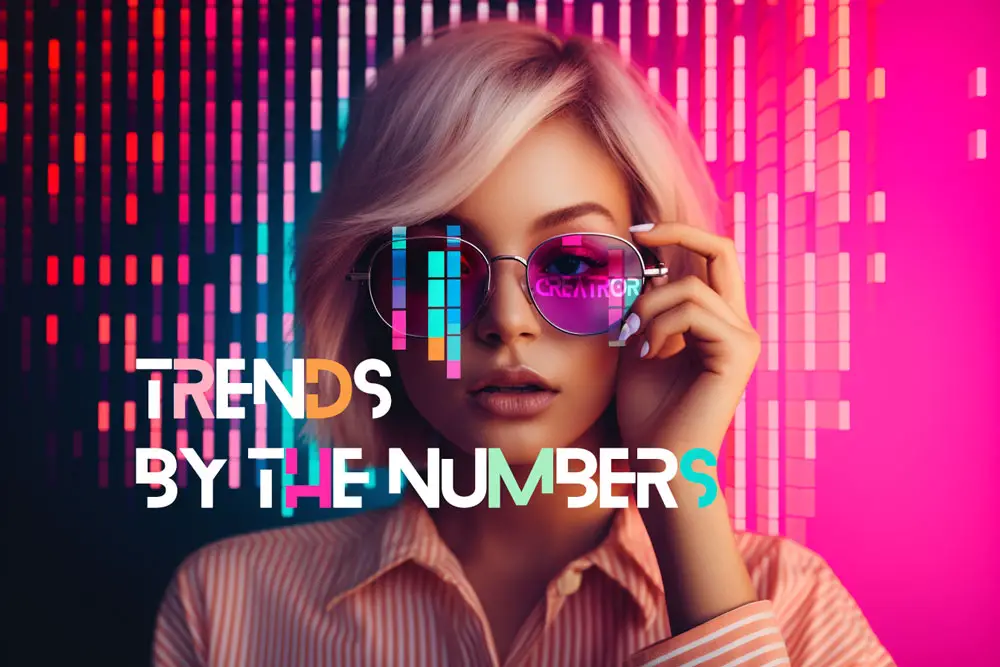
The People in the Creator Economy: By the Numbers – Growth, Trends, and Opportunities
How many people in the creator economy?
The creator economy is growing at an unprecedented pace, and to grasp its sheer magnitude, we turn to recent statistics. VC firm SignalFire’s 2020 estimate conservatively placed the number of creators at 50 million, a figure still widely cited across major media platforms. However, a more eye-opening revelation comes from an August 2022 Adobe study, which suggests that the people in the creator economy could encompass a staggering 303 million individuals.
What’s even more astounding is that over half of these creators have jumped into this industry since 2020. In this article, we’ll dive into these contrasting statistics, offering insights into the creator economy’s explosive growth and the vast array of opportunities it presents to millions globally.
Table of Contents
YouTube as a cornerstone of the creator economy, wields significant influence.
With a staggering count of more than 114 million active YouTube channels, the platform provides an expansive canvas for content creators worldwide. These channels are complemented by over 10,000 partners utilizing Content ID, including broadcasters, movie studios, record labels, and more.
The reach of YouTube extends far and wide, with approximately 2.6 billion monthly active users spanning across more than 100 countries. Impressively, the platform garners engagement from about 122 million daily active users, reflecting its global resonance. Moreover, approximately 321,000 channels boast a substantial following, with 100,000 subscribers or more, showcasing the potential for creators to achieve significant recognition.
YouTube’s global reach is underscored by its content diversity, encompassing over 80 languages. However, it’s noteworthy that the platform faces restrictions in five countries: China, North Korea, Iran, Eritrea, and Turkmenistan. Remarkably, YouTube stands as the world’s second most visited website, trailing only Google, as revealed in research conducted by SEMrush.
[Wyzowl]
The World of Influencers
Content creation and influencers play a significant role. They utilize various platforms like Instagram, YouTube, and TikTok to engage their audiences and monetize their content through sponsorships, brand collaborations, and advertising revenue.
Earnings:
Influencers are substantial earners, with 78% of them making an annual income of $23,500 or more. A substantial 43% of influencers even rake in $50,000 or more per year, primarily through lucrative sponsorships that can fetch over $3,000 per sponsored post.
Instagram Dominance:
Instagram is a significant hub for influencers, with 24.3% of all Instagram accounts boasting over 100,000 followers. Despite this, 75.8% of accounts have fewer than 100,000 followers, with 39.1% having less than 10,000.
Growing Market:
The influencer marketing market is on a steady ascent, projected to have a Compound Annual Growth Rate (CAGR) of 8% through 2025. This underscores the enduring appeal of influencers in the creator economy landscape.
Top-Tier Creators:
Within the YouTube community, a small percentage of creators has amassed significant wealth, earning millions annually from ad revenue, sponsorships, merchandise sales, and other business ventures. Leading influencers on Instagram have established themselves as lucrative brand partners, often commanding substantial fees, sometimes reaching the million-dollar mark, for sponsored posts and collaborations.
Patreon hosts creators who have built devoted followings willing to pay for exclusive content, particularly in niches like art, music, or education, resulting in substantial monthly incomes, with some creators earning over $1 million annually. Twitch, known for live streaming, boasts creators who have turned their passions into lucrative careers, earning six-figure incomes annually through subscriber revenue, viewer donations, and brand partnerships.
The success of these top earners underscores the financial potential within the creator economy. Their achievements serve as real-world examples of how creators can turn their passions into profitable ventures.
Influencers often partner with companies to promote products and services to their followers. This marketing strategy has proven effective due to the trust and connection influencers have with their audiences. Brands recognize the potential reach and impact of these partnerships, making influencer marketing a valuable component of the creator economy.

Trends and Projections
Participation in the creator economy is especially popular among young Americans, driving significant growth. The influencer marketing market is projected to experience a Compound Annual Growth Rate (CAGR) of 8% through 2025. YouTube has witnessed substantial revenue growth, with a remarkable 30% increase over the past four years. Nevertheless, creators faced challenges during the height of the COVID-19 pandemic, as many experienced a decline in ad revenue by up to 20%.
As we look ahead, the creator economy is on the verge of a catalytic change with the development of SocialFi (Social Finance). This progressive space is set to revolutionize how we interact with social media, earn from our content, and connect with creators. SocialFi introduces novel monetization methods such as buying shares of creators and investing in project royalties. These developments will enable more direct financial engagement between creators and their audiences, reshaping the creator economy in exciting ways.
Earnings Disparity
The creator economy showcases a stark earnings divide. In the United States, the average content creator earns approximately $57,234 annually. However, this average is significantly influenced by the top earners, as the top 10% of content creators make more than $80,000 per year. This disparity highlights the challenges that newcomers face when entering the creator economy. While it offers immense potential for success, only a select few reach the upper echelons of earning, emphasizing the importance of innovation and new monetization avenues to bridge this divide.
Platform Preferences
Success in the creator economy often hinges on choosing the right platform, and different platforms cater to various niches and audiences. YouTube, one of the most profitable content creation platforms, boasts creators earning a collective $4 billion annually. Etsy, Instagram, WordPress, and Amazon Publishing follow in the rankings, with varying degrees of profitability.
Instagram stands out with 5.64 million users earning an income from the platform, while WordPress has 4.85 million earners. On the other hand, Twitch, which focuses primarily on gaming content, boasts approximately 27,000 partners making a monthly average of $3,000 to $5,000 while playing 40 hours a week.

Selecting the ideal platform depends on a creator’s niche, goals, and audience, as each offers unique opportunities for monetization and audience engagement. Innovations and trends continually reshape these platforms, making it important for creators to stay informed and adapt to changes.
In the next few years, we can anticipate even more offerings in the creator economy. Subscription-based models, which have gained popularity, are becoming common on every platform. Platforms are addressing challenges related to oversaturation, centralizing monetization within their ecosystems, and decentralizing content delivery to emphasize data ownership. These developments are opening up new revenue streams for creators. With the rise of SocialFi, instant payment options are increasingly essential for upcoming platforms. While many new solutions are emerging to address current challenges, the key is to keep an eye out for platforms that can establish large user bases, as these will likely provide more lucrative and equitable opportunities for creators in the future.
Conclusion
It’s evident that exciting changes lie ahead. Fractionalized ownership, a concept that has been in development for years but is now on the cusp of revolutionizing the way creators and their audiences interact. The promise of fair shares and swift monetization is on the horizon, and platforms like Hyprr are at the forefront of this groundbreaking movement. Imagine the convenience of a debit card connected to your social account, allowing you to access your earnings instantly from tips and subscriptions. No more waiting; the future of creator monetization is here.
To explore this fascinating topic further, check out these insightful articles:

Content Royalty Offering: NFTs bring a fresh approach to collaboration, using smart contracts for rewarding creators and establishing digital footprints.

Imagine investing in creativity through ‘Own a Share Offering’: Buy NFTs that let you share in artists’ earnings, redefining your role as a supporter!






Leave a Reply